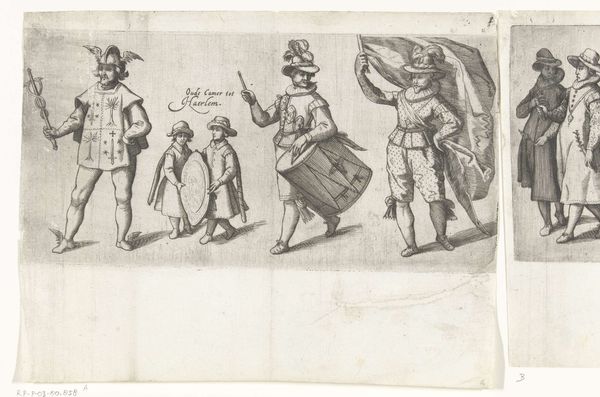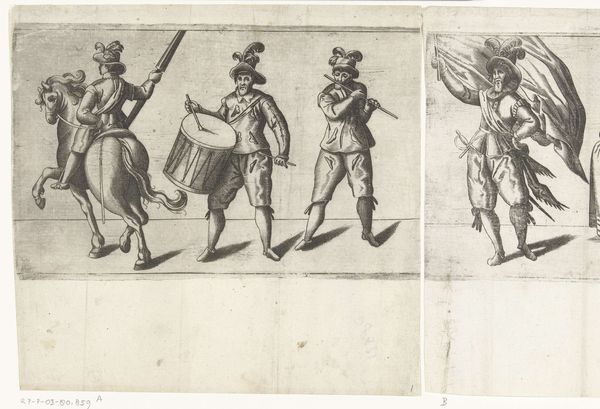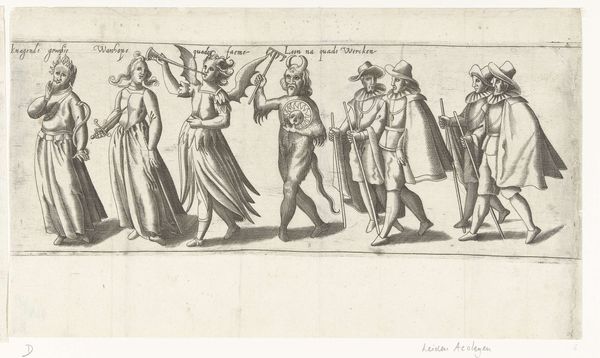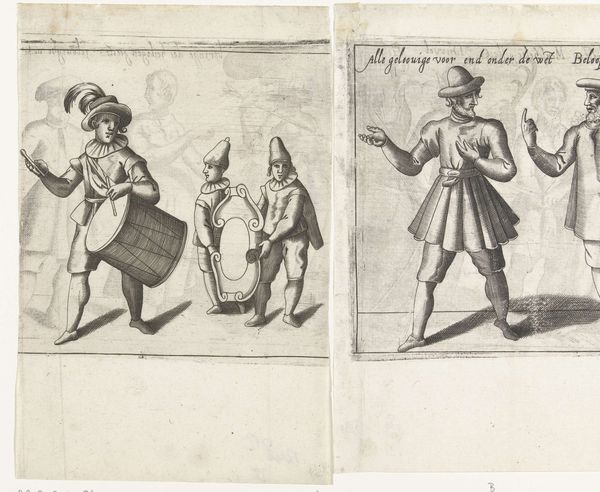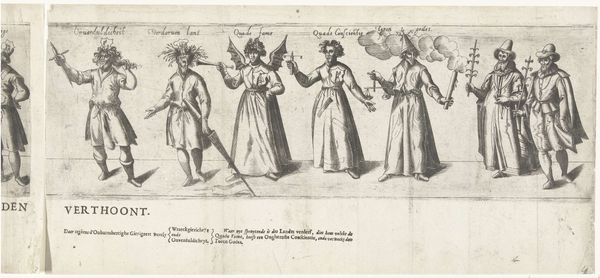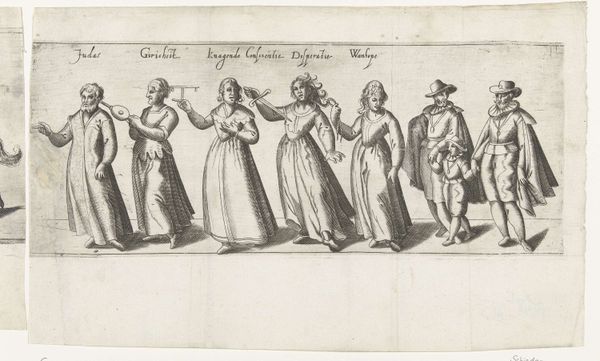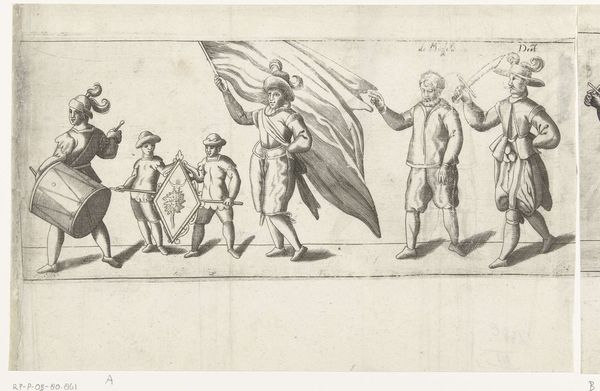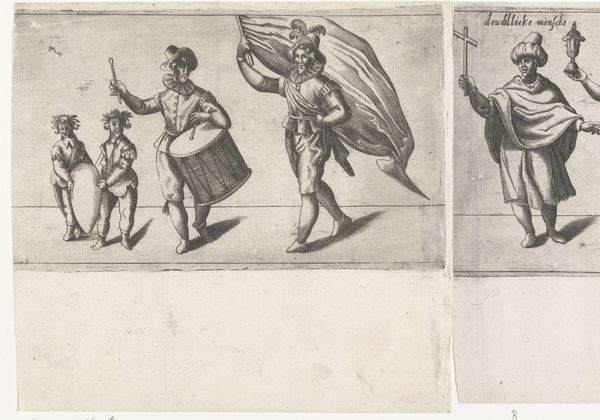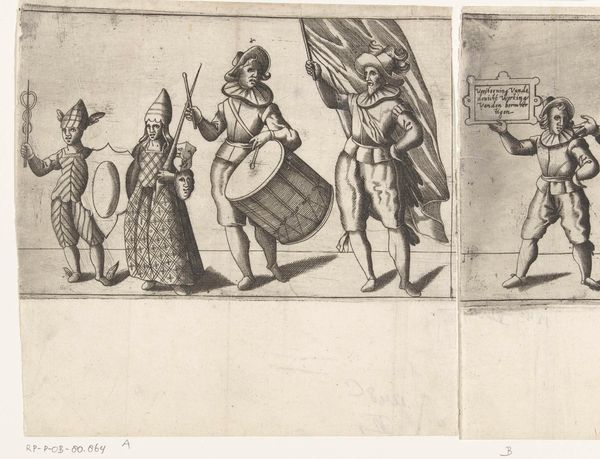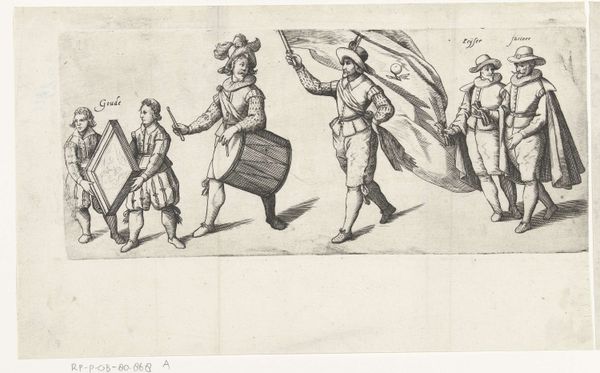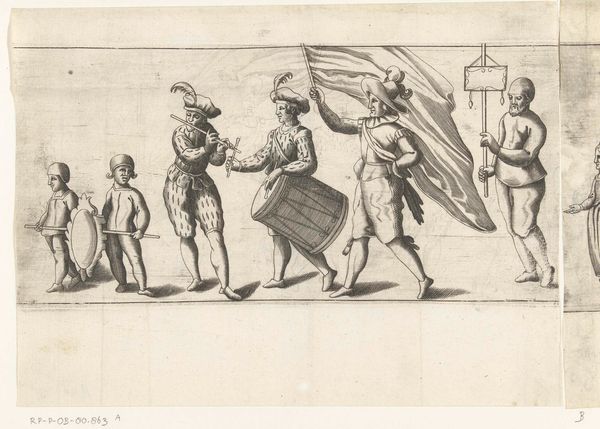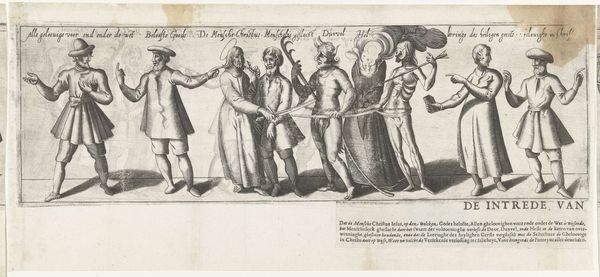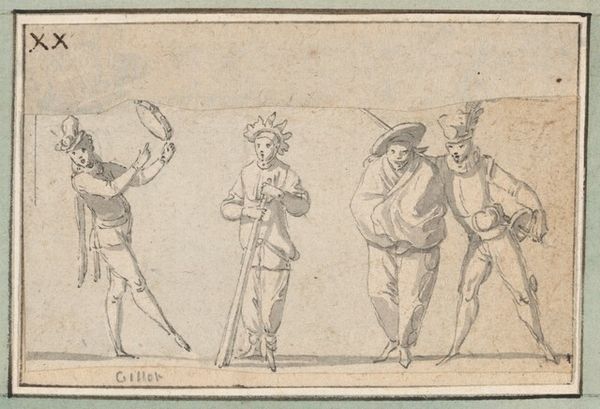
Optocht door de rederijkerskamer De Lelijkens onder de Doornen uit Noordwijk (eerste deel), 1607 1607
0:00
0:00
print, engraving
#
portrait
#
narrative-art
#
dutch-golden-age
# print
#
caricature
#
figuration
#
line
#
genre-painting
#
history-painting
#
engraving
Dimensions: height 200 mm, width 348 mm
Copyright: Rijks Museum: Open Domain
Curator: Here we have a look at an engraving from 1607 titled "Procession of the Rhetoric Chamber De Lelijkens onder de Doornen from Noordwijk," attributed to an anonymous artist. Editor: Immediately, it strikes me as almost a parade of… oddballs. There’s something deliberately awkward in their postures, and their attire feels both performative and slightly mocking. Curator: It is intriguing. These figures represent members of a rhetoric chamber, which were literary societies common in the Low Countries during the 15th-17th centuries. They would organize contests in poetry, drama, and rhetoric. This print likely commemorates or satirizes one of their public processions. Editor: Ah, satire! That explains the caricatured features and exaggerated costumes. What was the purpose of these chambers in society, besides, you know, parading? Curator: They played a significant role in shaping public opinion and civic identity, staging performances that often engaged with contemporary social and political issues. These societies served as important cultural institutions, albeit often with specific local biases and societal function, but sometimes involved local squabbles too, it would seem. Editor: It's fascinating to think of these artistic societies engaging in, what sounds like, elaborate forms of social commentary. Given the costumes and the "Lelijkens onder de Doornen"—"Ugliness among the Thorns"—theme, I'm curious about what these individuals might have been trying to express or subvert. Curator: Considering the socio-political climate of the early 17th century, with ongoing religious and political tensions in the Dutch Republic, satire like this could be a potent way to challenge authority or critique social norms. The “Ugliness” motif may represent a deliberately provocative choice, mocking perhaps societal flaws or, conversely, accepted notions of beauty and taste. Editor: It adds a layer of complexity, doesn't it? Seeing this not just as a record of a performance, but as a subtle form of rebellion or social commentary. I appreciate how unpacking its history provides us with an awareness of performance as an intrinsic component of art history. Curator: Indeed, art like this, which initially seems simply historical, provides rich insight into the values and anxieties of a specific time. Editor: Exactly! It makes us aware of our current moment and our contemporary biases. It pushes us to question who "gets" to do the criticizing. Curator: A potent reminder of art's continuing, often subversive, role.
Comments
No comments
Be the first to comment and join the conversation on the ultimate creative platform.
